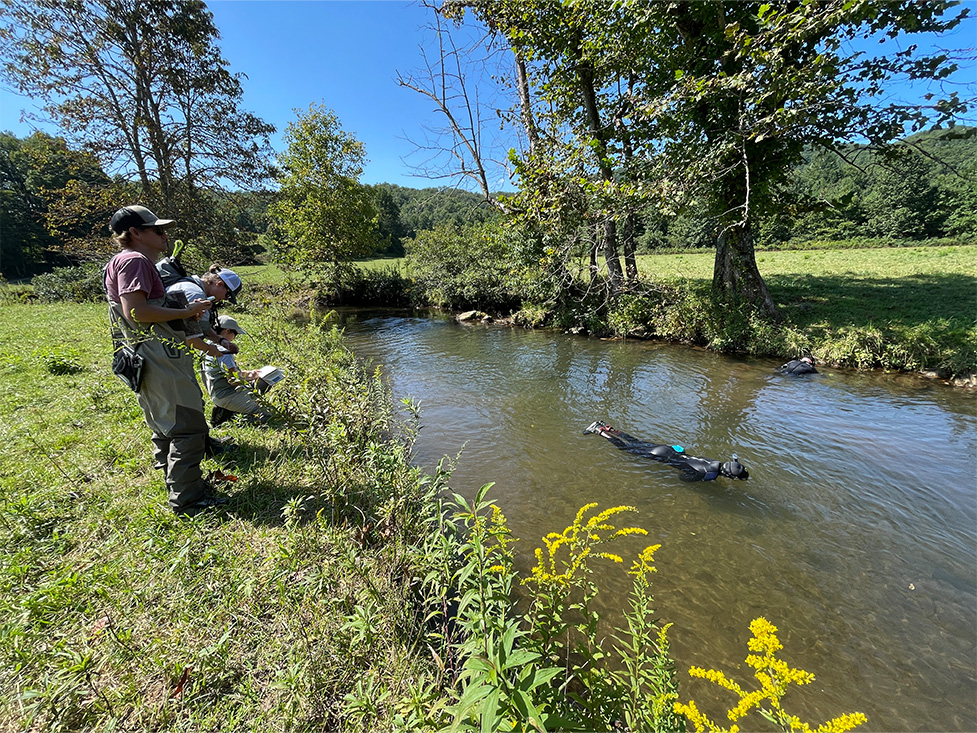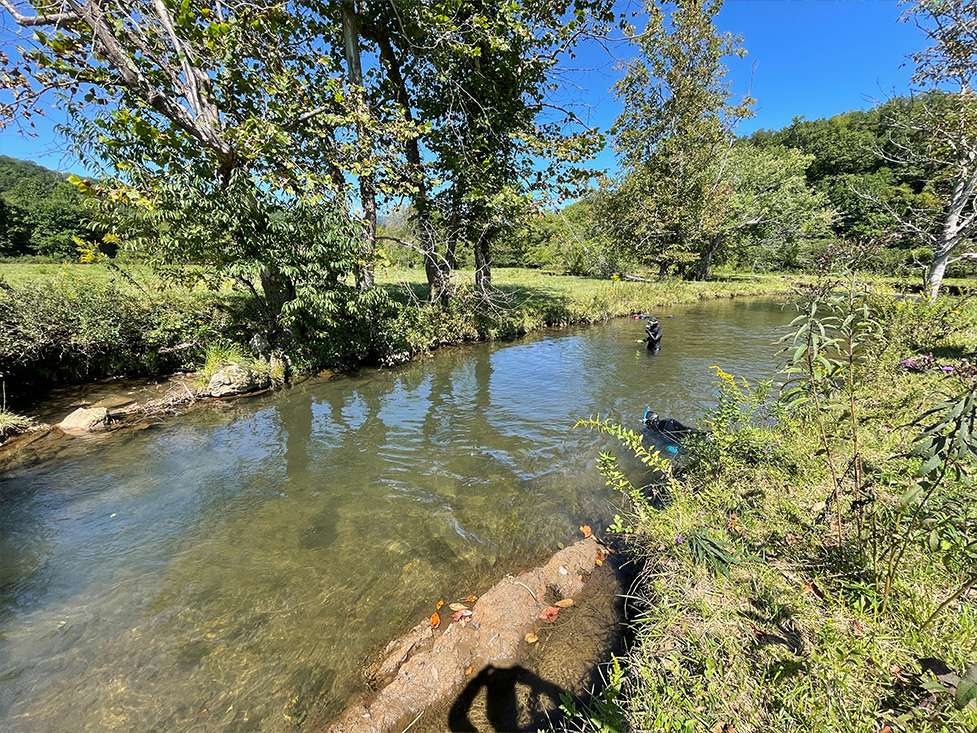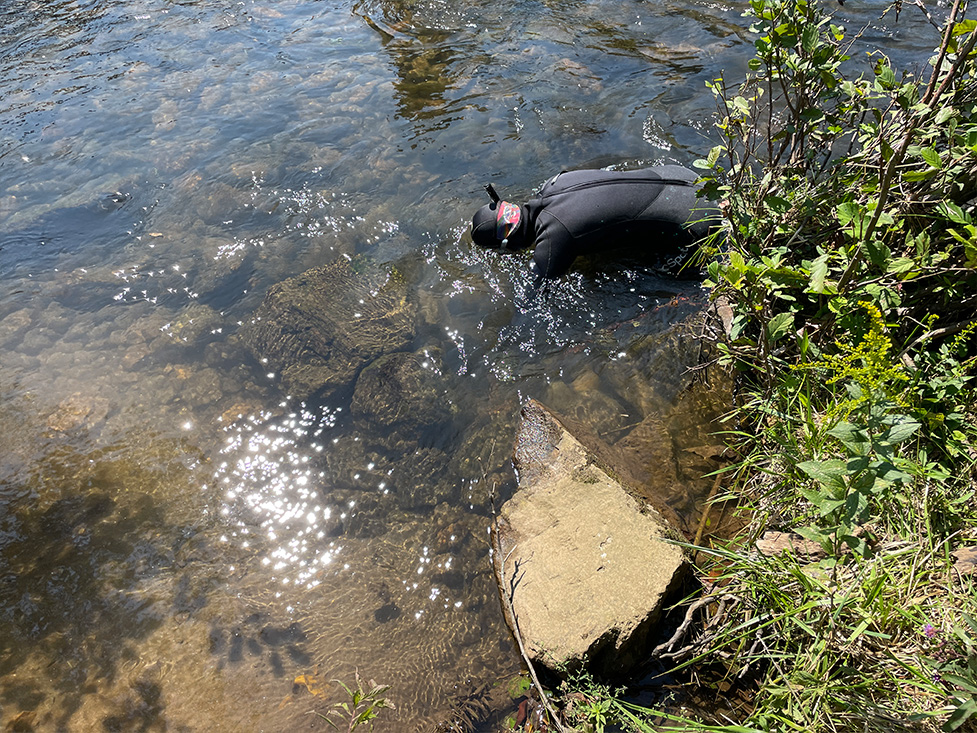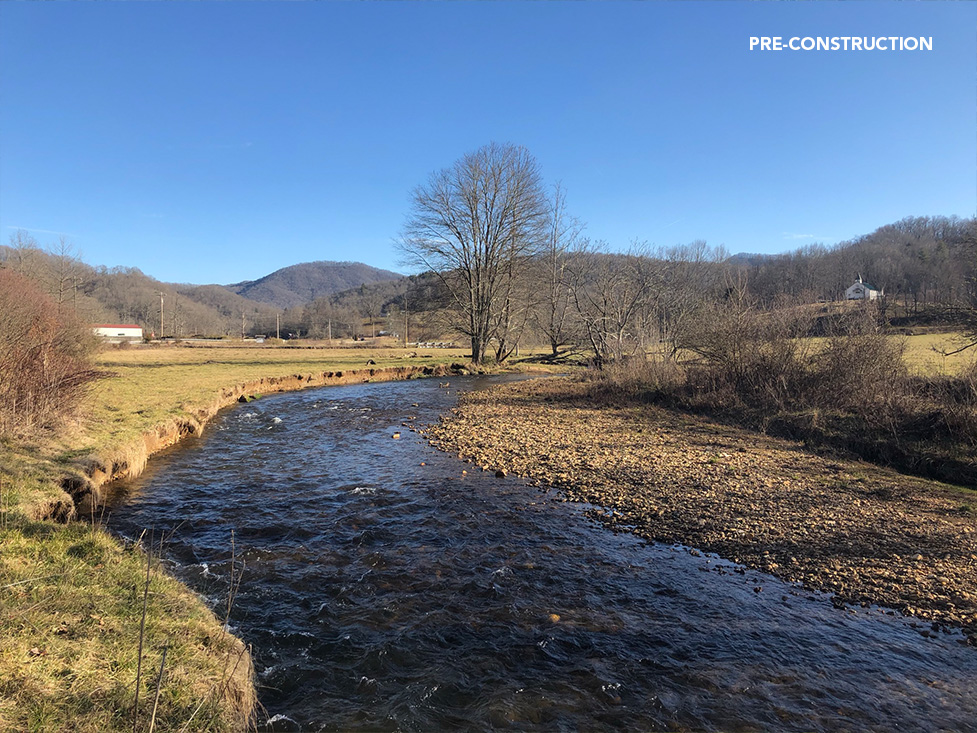Conserving Eastern Hellbender habitat at Wildlands Engineering’s Falcon Mitigation Site
North Carolina is home to one of the largest aquatic salamanders found in the United States, the Eastern Hellbender (Cryptobranchus a. alleganiensis). The Eastern Hellbender can grow to be more than two feet long and is found in perennial streams with fast flowing, cool, and clear water. Adult hellbenders spend most of their life under large, flat rocks that shelter them, whereas larval and juvenile hellbenders hide beneath large rocks and under small stones in gravel beds. Fine sediments from eroding stream beds and banks can harm these key habitats for this unique species. The Eastern Hellbender is currently listed as a US Federal Species of Concern (FSC) and a North Carolina Special Concern (NCSC).
Wildlands is currently working alongside state and federal agencies to provide ecological and water quality improvements at our Falcon Mitigation Site located in the western part of North Carolina. The streams within this mitigation site are part of a natural area rated as ‘high’ functioning by the NC Natural Heritage Program due to the richness of aquatic species it supports. Both Wildlands and the North Carolina Wildlife Resources Commission (NCWRC) noted the potential benefit of performing a restoration project within this important stream community. To specifically benefit Eastern Hellbenders, Wildlands coordinated with NCWRC and conducted Eastern Hellbender surveys, as well as eDNA sampling during the design phase at the Site. Snorkeling within project streams was done to investigate existing habitats and try to identify any existing populations. Results from the study did not identify individual species within the project limits; however, a positive environmental DNA (eDNA) sample was recorded at the downstream end of the project which indicates that there is at least one animal within less than 1 km upstream from this point. Wildlands discussed areas that should be protected with NCWRC and is implementing species aimed habitats using large flat boulders to provide additional nesting areas within the channel post construction.
Through our restoration efforts, Wildlands will restore and enhance over 5,700 linear feet of stream by excluding livestock, creating stable stream banks, restoring a forest in agriculturally maintained buffer areas, and restoring riparian habitat. The site will also be protected in perpetuity by a 15.5-acre conservation easement. These actions will reduce fecal, nutrient, and sediment inputs to project streams, and ultimately to Cartoogechaye Creek and the Little Tennessee River, as well as reconnect instream and terrestrial habitats on the Site. Habitat and water quality are important factors for hellbender survival rates as they breathe entirely through their skin and cannot tolerate high sedimentation rates or low dissolved oxygen levels. Changes in watershed land use and streamside management have been the primary factor negatively impacting this species. During construction Wildlands and the contractor will be especially careful and observant for animals when working in the channel and relocate “out of harm’s way” per NCWRC guidance.
Wildlands is excited to be a part of this conservation effort for the Eastern Hellbender!
Sources:
USFWS: https://www.fws.gov/species/eastern-hellbender-cryptobranchus-alleganiensis-alleganiensis
NCWRC: https://www.ncwildlife.org/species/eastern-hellbender
Contacts at NCWRC: Lori Williams and Andrea Leslie






